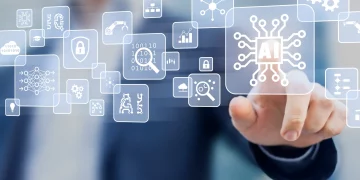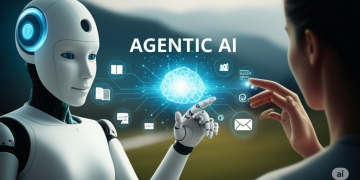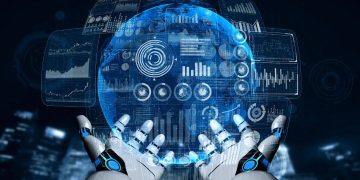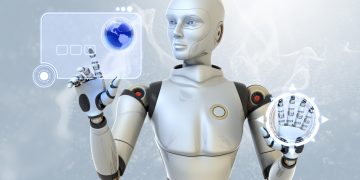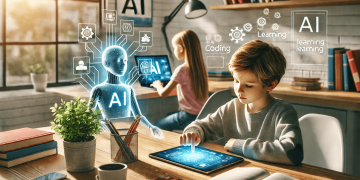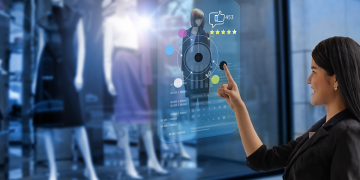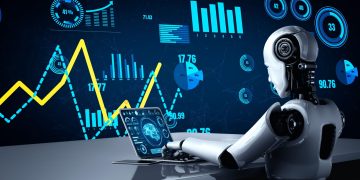Introduction
The advent of artificial intelligence (AI) has revolutionized various sectors by automating processes, making data analysis more efficient, and uncovering actionable insights that were once inaccessible. In today’s fast-paced, data-driven world, businesses face the dual challenge of managing large volumes of data and leveraging that data to make informed decisions. AI tools are designed to simplify data analytics, allowing businesses to derive insights from raw data while automating repetitive tasks to enhance operational efficiency.
The potential applications of AI in simplifying data analysis and automating processes are vast and can lead to significant improvements in decision-making, productivity, and profitability. From machine learning algorithms that uncover trends in data to automation tools that handle everything from data cleaning to workflow optimization, AI has the power to streamline complex tasks and make data-driven processes more accessible.
In this article, we will explore how AI tools can be used in the real world to simplify data analysis and automate processes. We will discuss the theoretical underpinnings of AI technologies, the practical applications of AI tools, and provide real-world examples of businesses that have successfully implemented these solutions. By the end of this article, readers will have a comprehensive understanding of how AI can be used to simplify and automate data analysis, improving business operations and decision-making.
Section 1: Theoretical Foundations of AI in Data Analytics and Automation
Before diving into the practical applications of AI tools, it’s essential to understand the foundational principles of AI that make these tools effective in data analysis and process automation. AI encompasses a wide range of technologies, and a few key concepts are critical to understanding how they can be applied.
1.1. Machine Learning (ML) and Data Analysis
Machine learning (ML) is a subset of AI that enables computers to learn from data without being explicitly programmed. ML algorithms analyze data, identify patterns, and make predictions or decisions based on that data. In the context of data analysis, ML is used to automate the process of discovering insights from large datasets, whether it’s detecting fraud, predicting customer behavior, or identifying emerging trends.
Supervised Learning: In supervised learning, algorithms are trained on labeled datasets where the output is known. This method is used for tasks like regression (predicting numerical values) and classification (grouping data into categories). Examples of supervised learning applications include:
- Sales Forecasting: Predicting future sales based on historical data.
- Customer Segmentation: Classifying customers into different groups based on purchasing behavior.
Unsupervised Learning: Unsupervised learning algorithms analyze data without labeled outcomes. They are used to find hidden patterns or structures in data. Common applications include clustering (grouping similar data points) and anomaly detection. Examples include:
- Customer Churn Analysis: Identifying patterns in data that suggest customers are likely to leave.
- Market Basket Analysis: Identifying products that are frequently purchased together.
Reinforcement Learning: This type of learning involves algorithms learning by interacting with their environment and receiving feedback in the form of rewards or penalties. It’s particularly useful in areas like process optimization and decision-making.
1.2. Natural Language Processing (NLP) in Data Analysis
Natural Language Processing (NLP) is another vital area of AI that plays a crucial role in simplifying data analysis. NLP enables machines to interpret, understand, and generate human language, making it possible for businesses to analyze unstructured data such as customer reviews, emails, and social media posts. Key applications include:
- Sentiment Analysis: Understanding customer sentiments from reviews or social media content.
- Text Classification: Automatically categorizing documents or messages into predefined topics.
- Named Entity Recognition: Identifying specific entities (e.g., names, organizations, dates) in text data.
1.3. Automation Technologies and Robotic Process Automation (RPA)
Robotic Process Automation (RPA) is another key technology that complements AI in automating business processes. RPA uses AI and machine learning to automate repetitive, rule-based tasks. Unlike traditional automation, RPA can handle complex processes that require data manipulation and interaction with various systems. Key benefits of RPA include:
- Increased Efficiency: Automation reduces the time needed to complete routine tasks.
- Error Reduction: RPA minimizes human error by automating processes with a high degree of precision.
- Cost Savings: By automating repetitive tasks, businesses can reduce operational costs.
Section 2: Practical Applications of AI Tools in Data Analytics
Now that we’ve covered the theoretical foundations, let’s explore how AI tools can be practically applied to simplify data analysis and automate workflows in real-world scenarios.
2.1. AI in Data Cleaning and Preprocessing
Data cleaning is often one of the most time-consuming aspects of data analysis. AI tools can streamline this process by identifying errors, missing values, and inconsistencies in the dataset. For example, AI can:
- Detect Outliers: Machine learning models can identify outliers that may distort the analysis.
- Fill Missing Values: Algorithms can infer missing values based on patterns in the existing data.
- Standardize Data: AI can standardize units and formats, ensuring consistency across datasets.
Real-World Example: A financial services company might use AI-powered data preprocessing tools to clean customer transaction data before performing analysis to detect fraudulent activities.
2.2. Predictive Analytics with Machine Learning
AI-powered predictive analytics tools use machine learning algorithms to analyze historical data and predict future outcomes. This capability is valuable for businesses looking to optimize operations, reduce risks, and improve decision-making. Common use cases include:
- Demand Forecasting: Retailers can use machine learning models to predict demand for products, allowing for better inventory management.
- Customer Lifetime Value (CLV) Prediction: AI can predict which customers are likely to generate the most revenue over time.
- Churn Prediction: Businesses can identify customers at risk of leaving and take proactive measures to retain them.
Real-World Example: E-commerce companies use predictive analytics to personalize product recommendations and improve customer retention by anticipating individual preferences and behavior.
2.3. AI in Process Automation
AI can streamline various business processes, especially those that are repetitive and time-consuming. Robotic Process Automation (RPA) tools, in combination with machine learning and AI, can automate entire workflows, such as:
- Invoice Processing: AI tools can automatically extract data from invoices, validate the information, and enter it into accounting systems.
- Customer Service: AI chatbots can handle routine customer inquiries, providing instant responses and reducing the workload of human agents.
- Document Review: AI can be used to analyze and categorize large volumes of documents, saving time and ensuring accuracy.
Real-World Example: A healthcare provider uses AI to automate the claims processing workflow, reducing the time it takes to review, approve, and reimburse claims.
2.4. Natural Language Processing (NLP) in Data Analysis
NLP tools are used to process and extract insights from unstructured textual data, which constitutes a significant portion of the data businesses generate. Some common NLP applications include:
- Customer Feedback Analysis: NLP tools analyze customer feedback to understand sentiment and identify common issues or suggestions.
- Social Media Monitoring: AI-powered social listening tools help companies track and analyze brand mentions, customer sentiment, and trends on social media platforms.
- Text Summarization: NLP can automatically generate summaries of long documents, saving time for businesses that need to digest vast amounts of information.
Real-World Example: A travel company might use NLP to analyze customer reviews across different platforms and identify key areas for improvement in their services.

Section 3: Integrating AI into Business Operations
While AI tools can provide significant benefits in data analysis and process automation, integrating AI into business operations requires careful planning and execution. Here are key steps businesses should take to successfully implement AI:
3.1. Identifying Business Needs
Before implementing AI tools, businesses must identify the specific processes or tasks that AI can simplify or automate. This requires understanding the current workflow, pinpointing bottlenecks, and assessing the potential impact of AI adoption.
3.2. Selecting the Right AI Tools
Once the business needs are identified, companies must select the right AI tools that align with their objectives. Whether it’s a machine learning model for predictive analytics or an NLP tool for sentiment analysis, businesses need to choose AI tools that fit the scale and complexity of their needs.
3.3. Ensuring Data Quality
AI tools rely on data to function effectively. Therefore, it is essential to ensure that the data being fed into the AI models is of high quality. Data must be clean, accurate, and representative of the business context to produce meaningful results.
3.4. Training Employees and Scaling AI Solutions
Training employees to work with AI tools is crucial for successful implementation. Whether it’s training staff to use machine learning dashboards or educating them on how to interact with AI-powered automation tools, ensuring that employees are comfortable using AI is key to driving adoption and maximizing the benefits.
Conclusion
AI tools offer powerful solutions for simplifying data analysis and automating business processes. By leveraging machine learning, NLP, and RPA, businesses can extract valuable insights from large datasets and streamline routine tasks to improve operational efficiency. However, the key to successfully utilizing AI lies in understanding its theoretical foundations, choosing the right tools, and integrating them into business workflows.
The practical applications of AI are vast and diverse, from predictive analytics and process automation to sentiment analysis and text classification. Businesses across industries can benefit from implementing AI to optimize their operations, improve decision-making, and drive innovation. The future of AI in data analysis and automation is promising, and with careful planning and execution, companies can unlock its full potential to gain a competitive edge in their respective industries.





